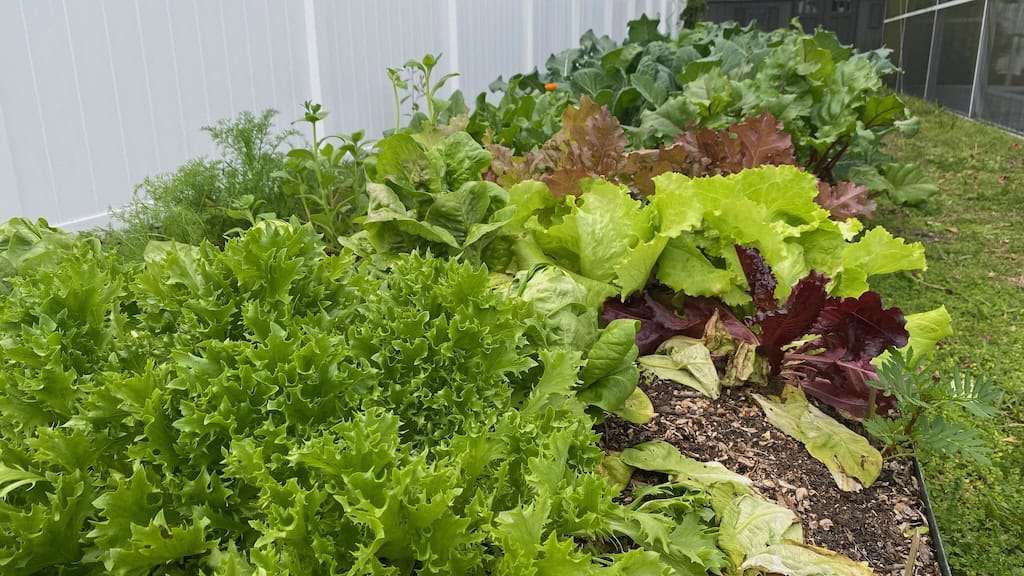Last Updated on February 1, 2024 by Homegrown Florida
Today, I’ve got something extra juicy to share with you – my top five favorite tomato varieties that are an absolute hit here in sunny Florida. I think some of these might surprise you, so get ready to dive into the wonderful world of tomatoes that have aced the Sunshine State test. Trust me, you won’t want to miss this.
Before we jump into the varieties, let’s talk about the challenges we face when growing tomatoes in our subtropical climate. The intense heat and humidity can really take a toll on these very delicate plants. Fungal issues such as blight and powdery mildew become common enemies, and pests are a whole other issue here – they will definitely keep you on your toes. But don’t worry, by choosing the right varieties and timing your planting, we can overcome these challenges and enjoy a beautiful harvest.
Another thing to consider when growing tomatoes here is that timing is key. Our ideal growing seasons are spring and fall when the temperatures are more moderate, and the pests have kind of calmed down a little bit. You want to avoid planting during the scorching summer months, as the heat can stress the plants out and hinder the fruit set. Tomato plants will actually stop setting fruit if the temperature is above 90 degrees for several days in a row. By planning our planting accordingly, we set ourselves up for the best success.
Now, let’s dive into the stars of these shows. Let’s meet the Tomato Superstars that have stolen my heart and taste buds here in Florida. These are the champions that have battled the heat, outwitted the diseases, and endured all the pests.
San Marzano – The Paste Tomato
Let’s start out with the paste tomato – San Marzano. Known for its exceptional taste and meaty texture, San Marzano is a classic Italian variety that thrives pretty well in our climate. It’s perfect for making sauces, and it’s my favorite one to grow for canning, especially tomato sauce. It’s thick and meaty, grows quickly, and has high productivity. Seeds for this variety are pretty easy to find, and if you’re lucky, you might even be able to find transplants at a big box store.
Red Currant Tomato – The Tiny Flavor Bomb
Next up is a super tiny tomato, and it’s not the Everglade tomato. I know many people recommend Everglade Tomatoes, but that one is not making my top five list. That might be a surprise for you, but for me, I don’t like the taste of these as much as I like the taste of Red Currant Tomatoes. They are small, like Everglade, but with tougher skin, so they don’t break when picked, helping them last longer for fresh eating. These adorable little tomatoes pack a huge punch in terms of flavor. Believe it or not, they are my absolute all-time favorite tomato. Pop them straight into your mouth or use them in salads or pasta dishes – they do not disappoint.

Neptune Tomato – The Medium-sized Marvel
Next up is my favorite medium-sized tomato – Neptune Tomatoes. They’re a Florida favorite for their excellent heat tolerance and disease resistance. These vine-ripe tomatoes boast a firm yet juicy texture and are perfect for slicing in sandwiches. They are not super popular, but they are one of my favorites to grow for canning salsas because they’re a determinate tomato, which means they come ripe all at once. So, you can get a big harvest to can all at once. They are a pretty consistent solid performer.
Red or Yellow Pear Tomato – The Unique Pear-shaped Delight
Next up is the Red or Yellow Pear Tomato. With its unique pear shape and vibrant red color, red pear tomatoes are a bit different than what you might be used to. They look like a mix between a grape and a plum tomato, offering a very sweet and tangy flavor that pairs well with pretty much everything. They are the most productive tomatoes I have ever grown and are incredibly versatile – great for fresh eating, cooking, and canning.
Floradade Tomato – The Local Hero
Last but not least is the Floradade Tomato – a locally developed variety specifically bred to thrive in Florida climates. Created in 1976 by the University of Florida in Homestead, Florida, through cross-pollination, it was designed to withstand weather fluctuations and fungal diseases. Similar to Neptune, it’s a determinate, medium-sized tomato that comes ripe all at once in a bush-type plant. It’s just a touch more heat-tolerant than Neptune.
You probably noticed that when it comes to large tomatoes, I like to pick determinate varieties. Part of this is because they are ideal for canning, but I also really love them for fresh eating. Because they are determinate, the tomatoes come ripe all at once. What I like to do is pick them when they’re light green or blushing pink, usually towards the end of the season when the plants are starting to succumb to blight or when the pests are getting too intense. Then, I leave those on the counter to ripen. The pink ones ripen first, and the green ones will ripen over the next several months. Usually, that gets me through the summer months with fresh tomatoes to eat, even though my plants are long gone at that point. They’re much better eaten ripe from the plant, but this is a great way to extend my tomato season and avoid buying them from the store. I do the same thing in winter right before a frost, and those tomatoes get me through until around February. Doing it this way, I can eat homegrown tomatoes for nine out of 12 months a year.

Now, let’s get inside and make my favorite appetizer with garden-fresh tomatoes – bruschetta or is it bruschetta? Let’s find out. Happy gardening!



